Dear Reader, in this age of AI created content, please support with your goodwill someone who works harder to provide the human-made. Sign up in the righthand column or bottom of this page. You will receive my hand illustrated monthly newsletter RESTORE NATURE and access to the biodiversity garden design course as I write...and nothing else, I respect your time.
The benefits of healthy soil gained from regenerative practice
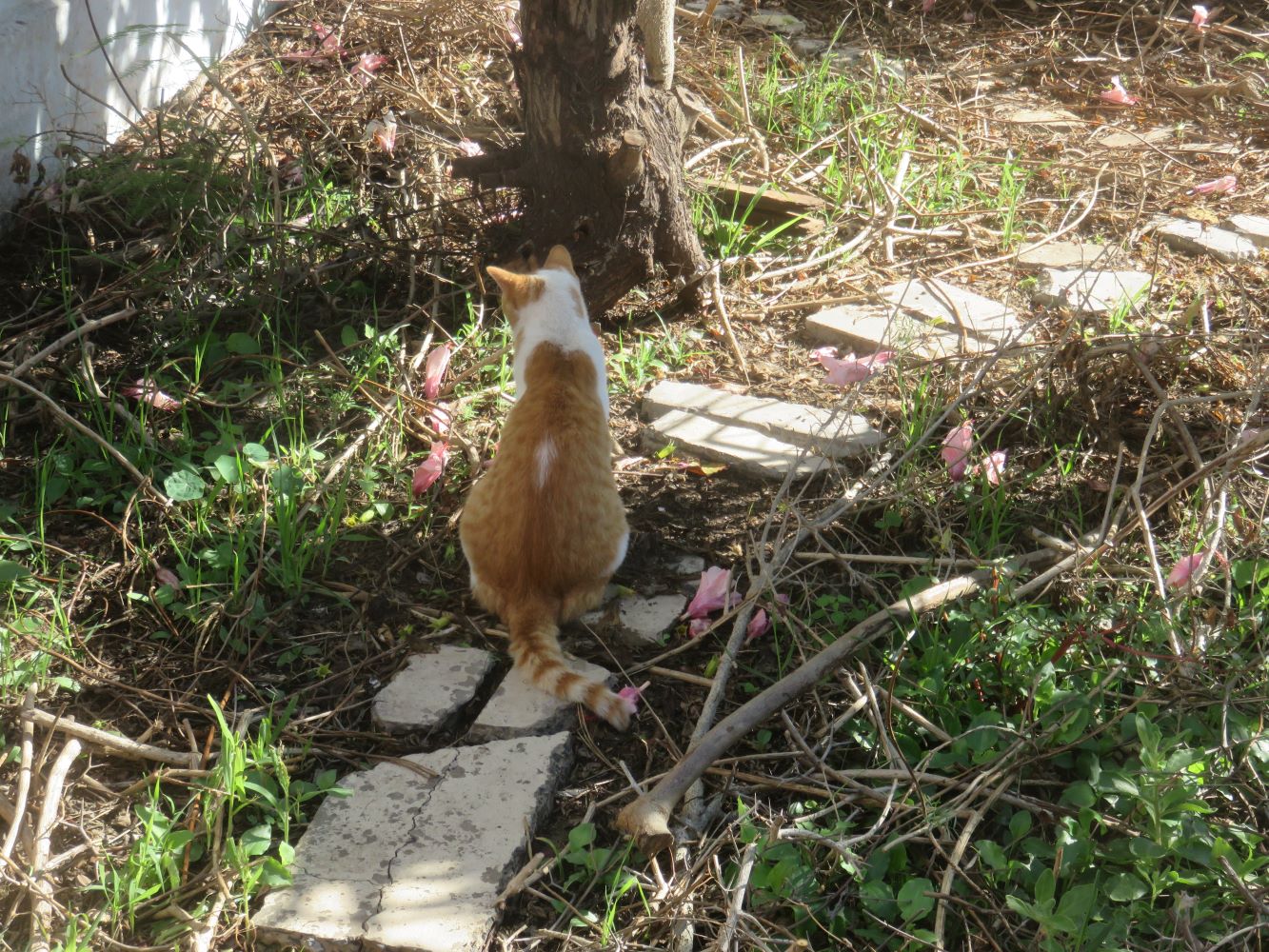 Someone is listening to healthy soil music, sitting among the new cover crops in the front garden.
Someone is listening to healthy soil music, sitting among the new cover crops in the front garden.This is part of a series on healthy soil. I've written about six principles that help one practice regenerative or restorative techniques to create living soil, and the importance of plants in creating soil health. I've written other articles on making compost, vermiculture and other topics for saving our soil from degeneration and the links are on the main soil page.
This article will describe the benefits of regenerative practice on several levels. There are so many virtuous cycles and there is so much positive feedback that it is hard to order the benefits into discreet categories. I have tried though. There are roughly sixty points, or sixty advantages I could find in in maintaining healthy soil, but there is a lot of overlap, as the same positive effect may feed into several other benefits. Anyway, here goes.
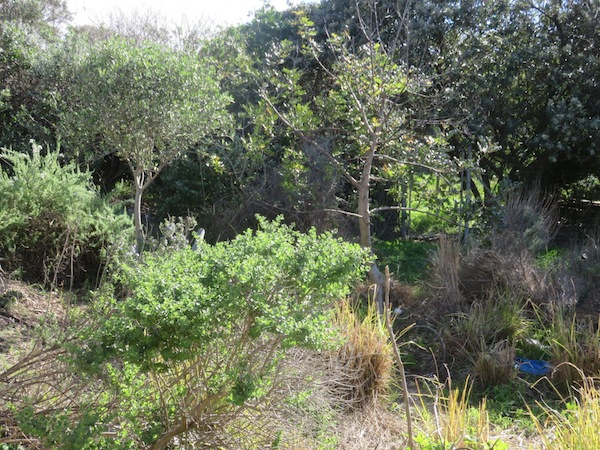 A natural looking, native plant food forest survives when the exotic annuals are in disarray, seen at a project in Cape Town.
A natural looking, native plant food forest survives when the exotic annuals are in disarray, seen at a project in Cape Town.Regenerative practice benefits the soil microbiome
First of all, at the foundational level, regenerative practices nurture the microbial life in the soil, and it is this nurturing which produces most of the other benefits. Part of regenerative practice, as you will see under the six principles, is to have permanent plant cover. Plants feed soil life by exuding through their roots the surplus of sugars formed during photosynthesis. Bacteria and fungi in the soil feed on these sugars, and in so doing release nutrients like minerals in plant ready form which the plant absorbs. The plant thus trades sugar which it has for other nutrients in the soil which it needs. The fungal hyphae carry these nutrients across distances inaccessible to the plant roots. So in general, the presence of these microorganisms increasees the nutritional status of the soil.
Plants shade the earth, keeping temperatures more than ten degrees lower than the soil would be if uncovered. The shading prevents sterilization of the soil by heat and UV light, allowing more organisms, and in greater diversity, to survive at the surface.
The bacteria in the soil, nurtured by plants, aggregate the soil. In the close vicinity of the root, or the rhizosphere, micro aggregates, or very small clumps, form. They consist of soil particles tied together with sticky substances, leaving a lot of space between the soil grains. The clumps are constructed by the bacteria, so that they can shelter them from predation by larger microorganisms, and create the right chemical environment for processing nutrients. They fungi feeding on the plant sugars have fine threads called hyphae, and these threads tie the smaller clumps together into larger ones. The larger clumps also contain a lot of pore space between the soil grains. And the clumping itself creates gaps in the soil. There are thus pores created in the soil by these three mechanisms and all that space makes the soil fluffy, and as porous as a sponge. This porousness, at macro and micro levels, is what creates so many of the benefits to be discussed shortly.
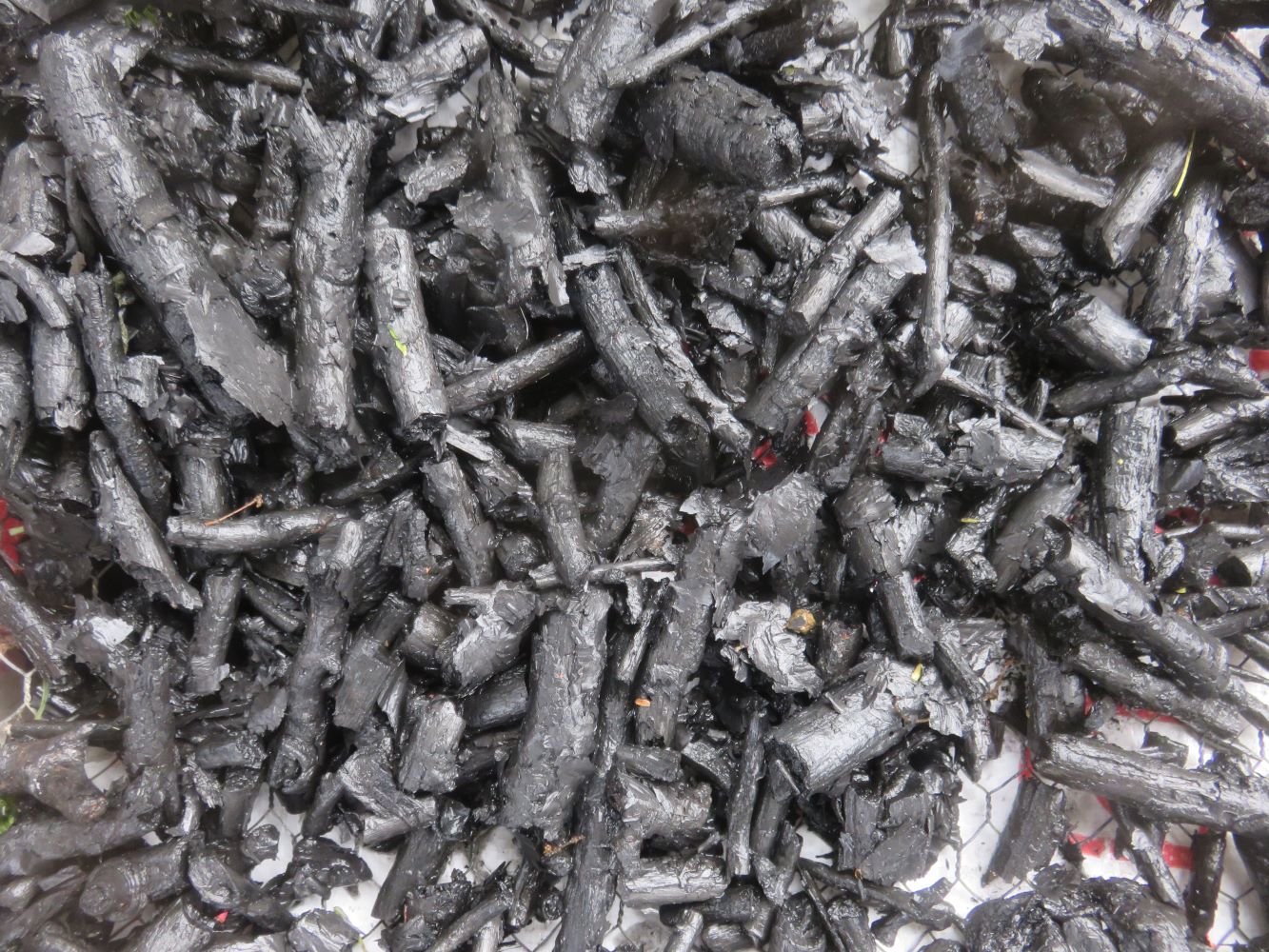 Biochar has fabulous amounts of micropore space. A perfect additive for sandy infertile soils.
Biochar has fabulous amounts of micropore space. A perfect additive for sandy infertile soils.Due to all the sugar the plants exude into the soil, they actually can add more carbon to the soil than the application of surface organic material like compost and mulch. However these additives are important. Composts, like a probiotic ferment, can inoculate soils with a greater diversity of organisms, as it is the spent residue of furious microbial activity, and mulches can protect soil from the sterilizing exposure to the sun, and help maintain a level of moisture in the soil which favors soil life.
Varied plant cover of different heights and species will have more varied root depths, and take down plant sugars to deeper levels, spreading its benefits through the soil, whereas surface additives will have a greater benefit to surface layers. However, turning soil to get to deeper layers can be very destructive to soil life, exposing deeper layers of the soil ecology to the sterilizing effects of UV light, heat and drying winds. Different microbes are adapted to live in the different layers of the soil with their differing oxygen supply and organic content. Scrambling all of that with ploughing or digging will reduce soil life long term. Regenerative practice discourages turning soil, as well as interfering with soil life with the use of chemical biocides like weed killers, fungicides and insecticides. They are designed to kill and they decimate much of the soil life, which also consist of fungi, insects and microscopic plants that are beneficial. Chemical fertilizer is likewise discouraged as it hastens the decompostion process so that the soil life and organic carbon in the soil becomes more unstable and depletes faster.
Thus we have covered several ways in which regenerative practice and its dos and don'ts benefit the life in the soil, and soil health, and this is what creates a domino effect of further benefits with practical significance to humans.
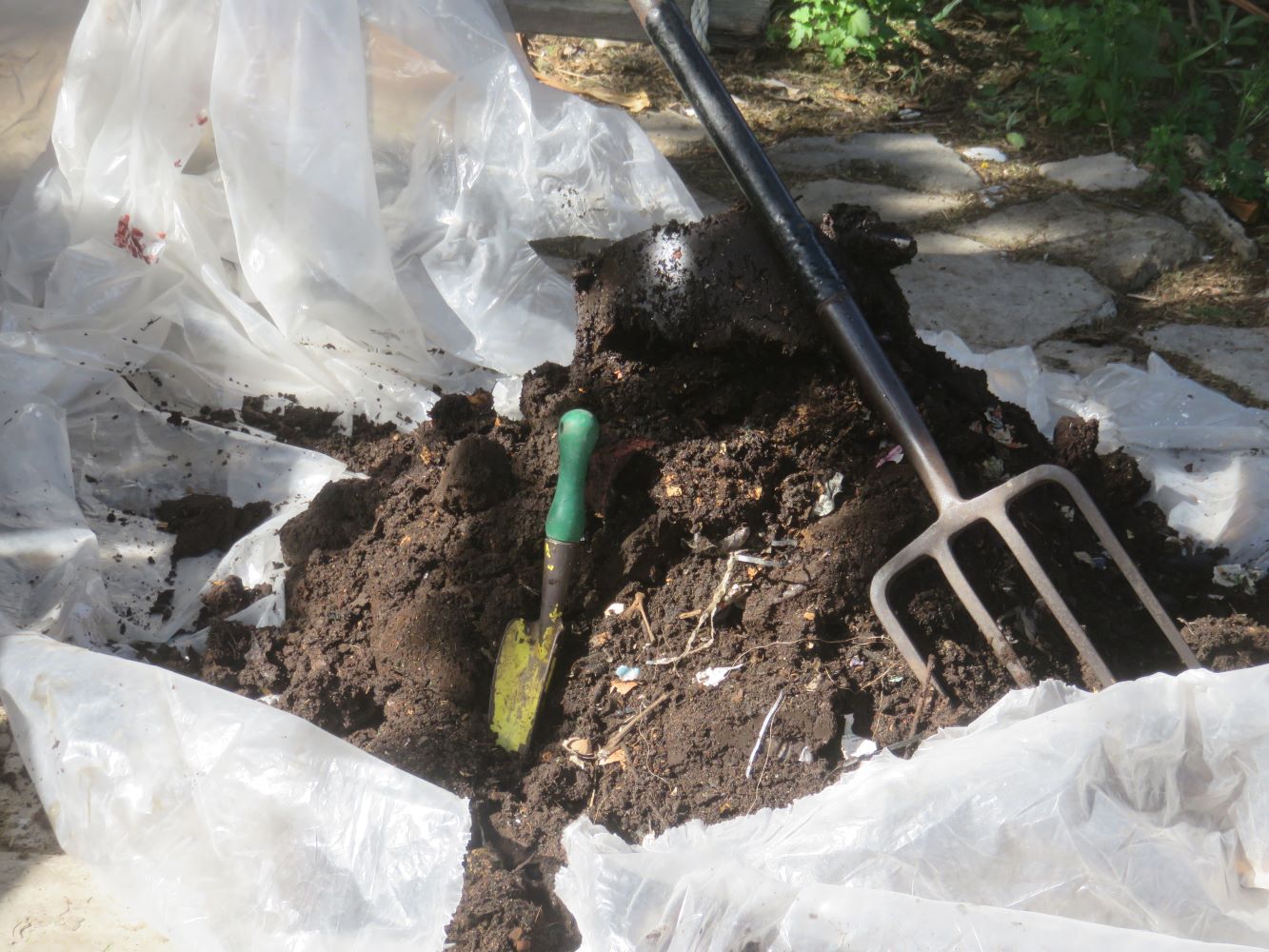 Vermicast can add microbial diversity to soil.
Vermicast can add microbial diversity to soil.The benefits to soil saving and fertility
Healthy soil has a self perpetuating dynamic. Living soil deepens as the years pass, instead of compacting and degrading. Plants play a major role in driving this regenerative process. Regenerated soil has structure, this significantly increases pore space. Increased pore space has many benefits. The pores absorb rainfall. They allow water to penetrate deeper into the soil, and they then hold that water better, like a sponge, and this reduces flooding and surface runoff and the consequent erosion. Plants also prevent erosion by physically holding soil with their roots. They also decrease erosion by protecting the soil from the impact of falling rain drops which cause compaction. Mulch likewise protects the soil from the impact of rain. The pores increase penetration or water, but also gases like oxygen. Elaine Ingham says that all plant disease starts of with anaerobic conditions in the soil. The pores in healthy soil ease root penetration and the greater the root network, the more nutrients plants have access to and the more effective their photosynthesis and the more sugars they produce, and with a greater root network this means the greater area the supply with sugars to engender soil life.
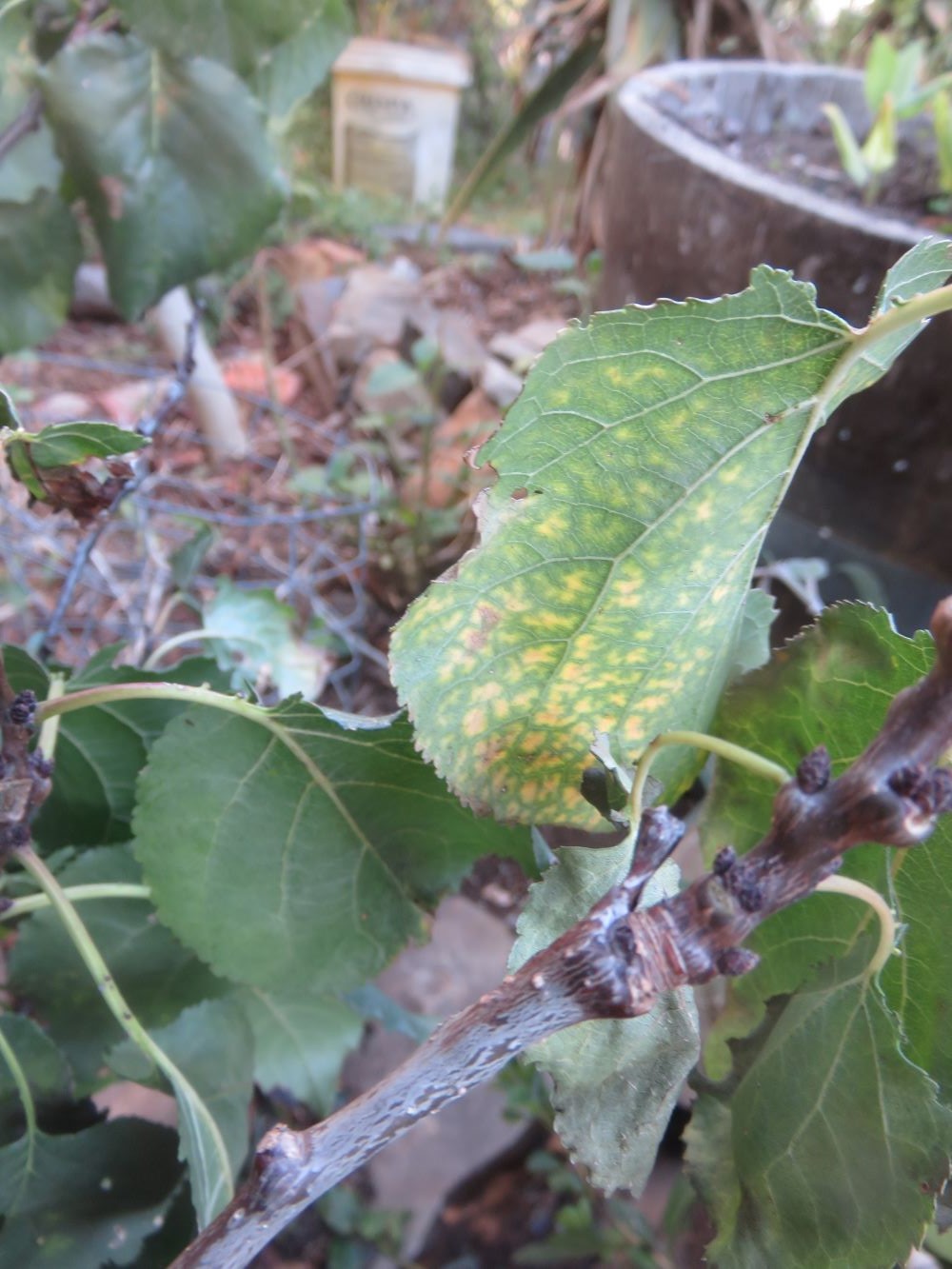 The appearance of fungal disease on my apricot tree and beloved Gemsbok cucumber spurred me into a soil regeneration drive.
The appearance of fungal disease on my apricot tree and beloved Gemsbok cucumber spurred me into a soil regeneration drive.Whew... that is a set of dominoes one wants to fall ! Deeper roots can pull nutrients from the subsoil, and the bacteria and fungi they nurture can even liberate minerals from rocks in the lower layers of the soil. The presence of organic matter in healthy soil increases its water and nutrient holding capacity, and plants and regenerative practice increase soil organic matter. The vigorous life in healthy soil is a factory for humus, which many gardeners know is the basis of fertility.
Some economic benefits of regenerative soil management
Perennial plantings, which are encouraged in regenerative practice, reduce labor over time.
Regenerative practice also bring down input costs in chemicals and irrigation. Wise use of plants also makes the use of expensive composts and other organic additives ...almost...superfluous.
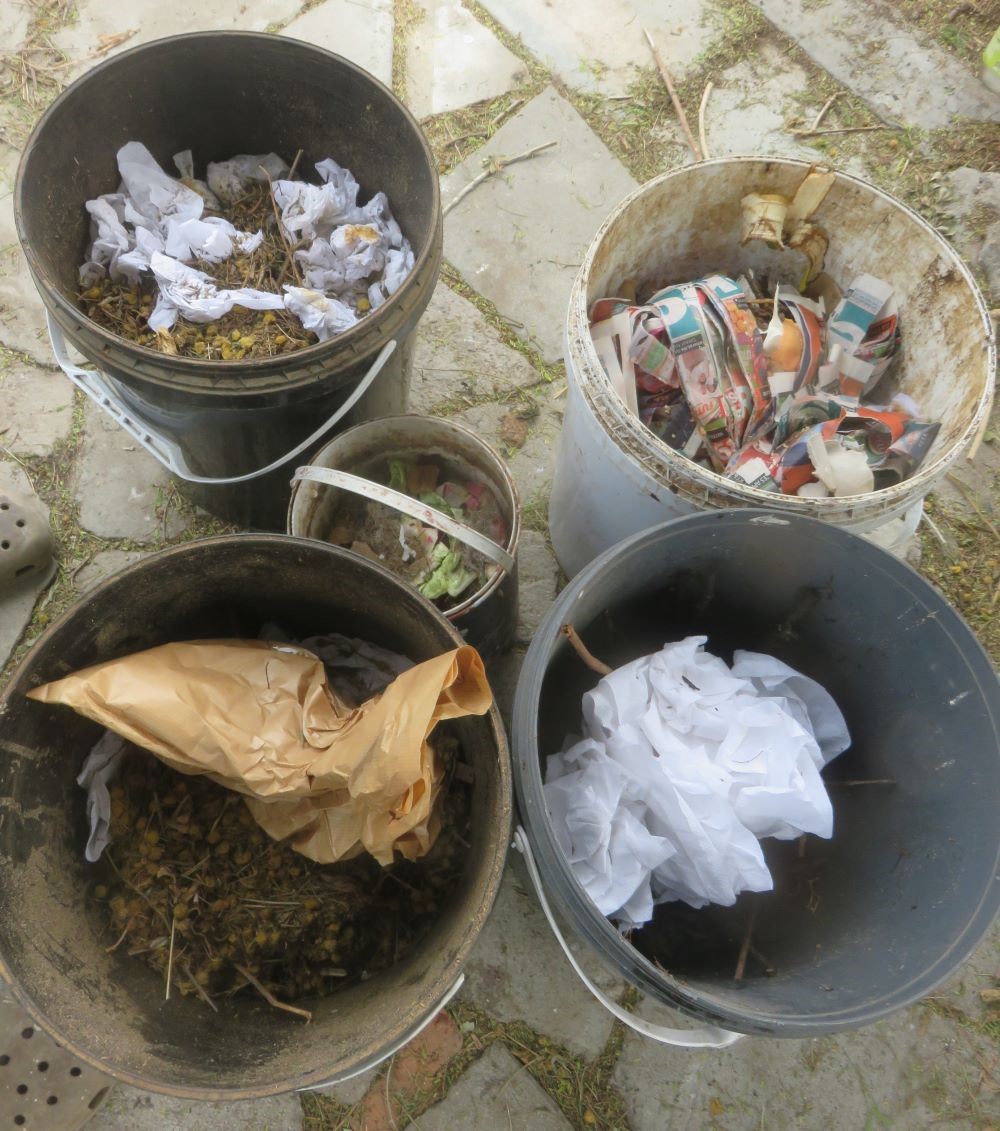 No cattle farm ? Use your own manure and kitchen scraps for the perfect compost pile: 10:30:60, high nitrogen, green (dry or fresh) and woody material.
No cattle farm ? Use your own manure and kitchen scraps for the perfect compost pile: 10:30:60, high nitrogen, green (dry or fresh) and woody material.For the gardener, making compost on a small scale is a by product of living at no extra cost.
For the grassland farmer, regenerative
practice allows them to farm more animals without harming the
environment, and actually helping the soil life flourish.See more in my previous article.
Healthy soil's effect on water systems
The soil sponge of healthy soil absorbs rain and releases the water slowly. Healthy soil over large catchment areas can make dried up rivers flow again, if its done right. Because a good soil sponge reduces flooding it stabilizes water supply.
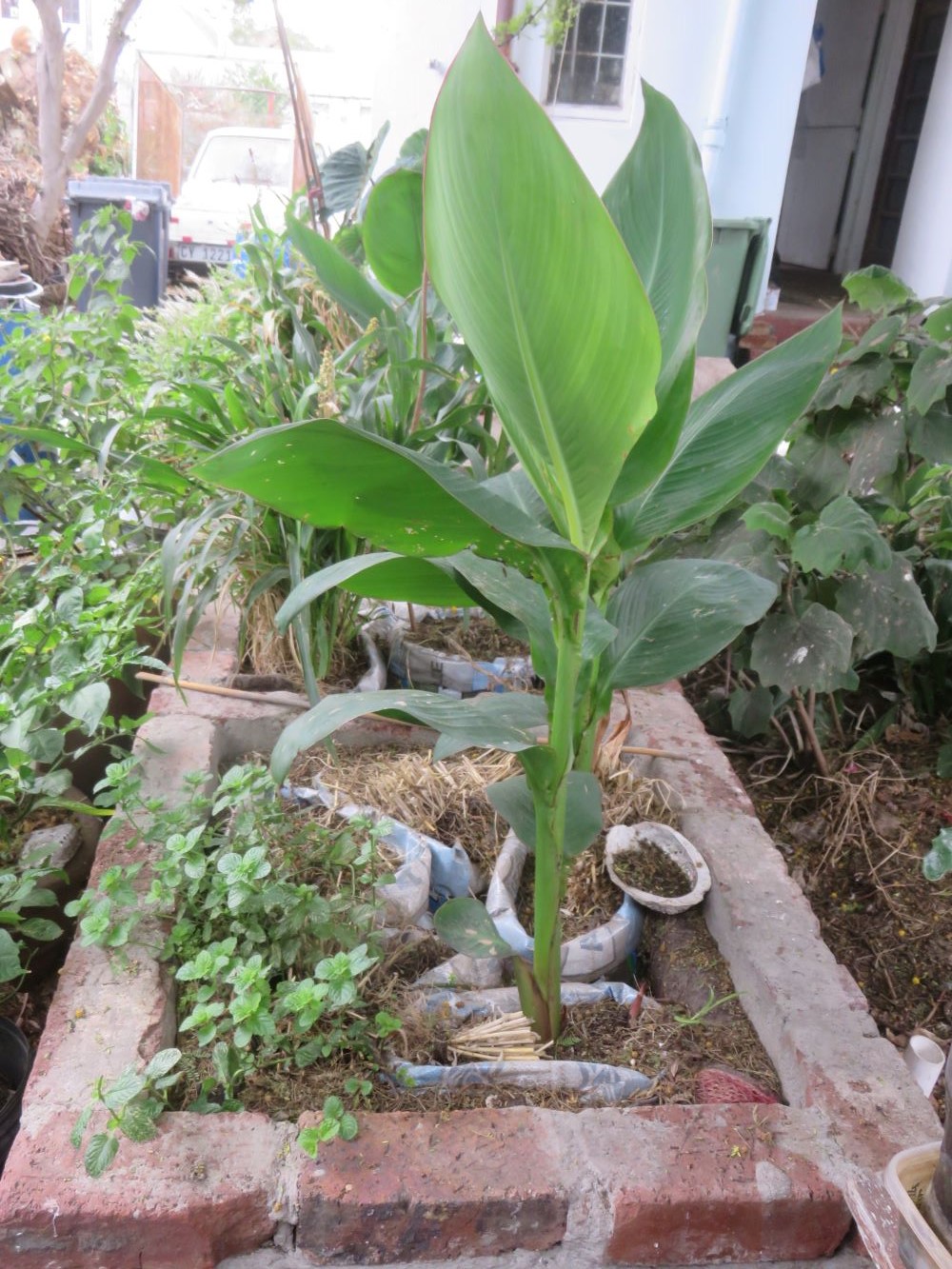 Perennial root vegetable, cannas, growing in the grey water system which uses the amazing power of healthy soil to clean dirty kitchen waste water. You can see the book I wrote about it in the right hand column.
Perennial root vegetable, cannas, growing in the grey water system which uses the amazing power of healthy soil to clean dirty kitchen waste water. You can see the book I wrote about it in the right hand column.A good soil sponge also reduces erosion, and slows the silting up of reservoirs and canals, further stabilizing water supply and cutting costs. Healthy soil cleans water as it passes through the soil pores, leading to better quality of water. More soil water, due the effect of the sponge, means more plant cover and healthier plants releasing more sugars, in an ever increasing virtuous cycle.
The effect on food
Regenerative soil management ensures healthy soil and this grows healthier plants and thus provides greater food security, and possibly much better nutrition, due to the improved nutrient status of healthy plants.
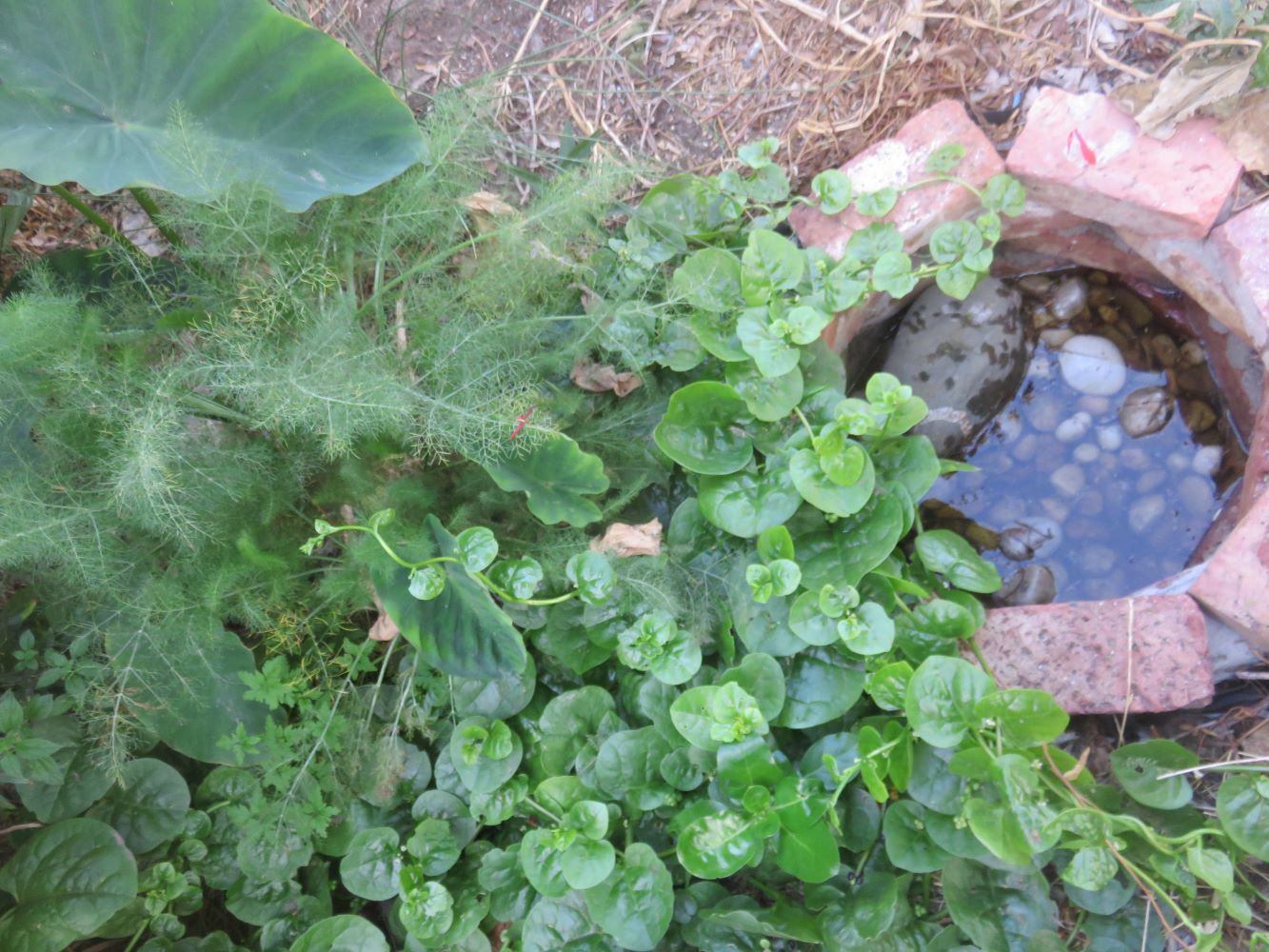 My other grey water filter also uses healthy soil microbes to clean. See how clear it is after passing through 3 cubic meters of sand.
My other grey water filter also uses healthy soil microbes to clean. See how clear it is after passing through 3 cubic meters of sand.Regenerative gardening also encourages the use of perennials and they are frequently higher in nutrients, as it is the annual food plants which have been the focus of much of the plant breeding. Plant breeding for profits means faster times to harvest and larger but nutritionally emptier vegetables, because nutrition has not been the focus of breeding till now. Perennial crops also increase the resilience of the food system if diverse mixed plantings are used.
Global warming and regenerative practice
More carbon can be sequestered in healthy soil using regenerative soil management systems, whereas turning the soil oxidizes and evaporates soil carbon. Frequent stretches like fallow periods when there is lack of plant cover means there is less replacement of soil organic matter. Depleted soils low in organic matter are soils with depleted organic carbon content. The amount of carbon which can be sequestered by regenerative soil management is astronomical.
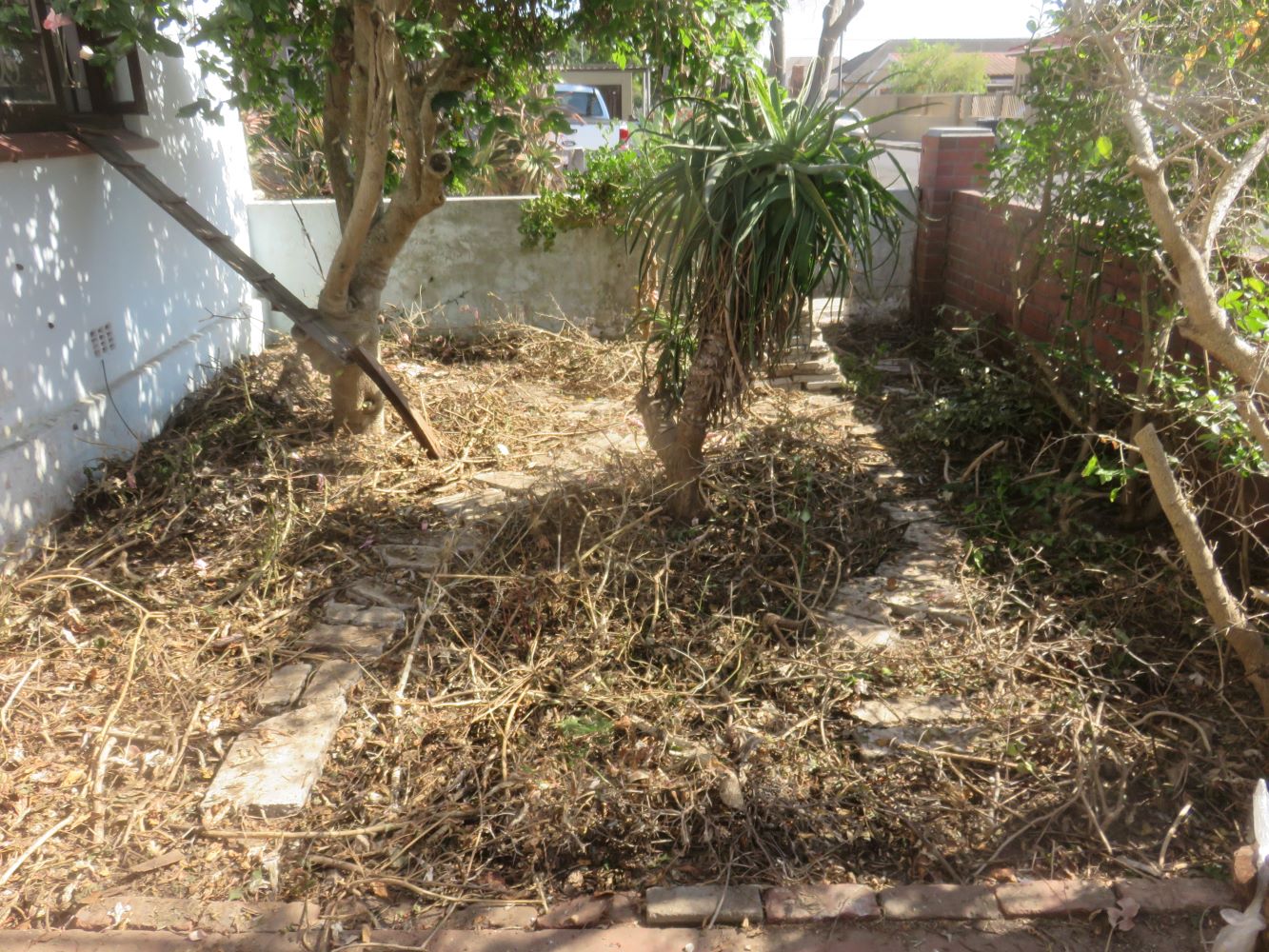 On the way to healthy soil I hope. The front garden after sowing cover crops, mulching and covering with sticks to stop birds.
On the way to healthy soil I hope. The front garden after sowing cover crops, mulching and covering with sticks to stop birds.In addition plants shade the earth, ameliorating local temperature highs, and thereby also the heat island effect over cities which drives away rain from their immediate catchments. Cape Town is a classic case of a city self creating drought.
The self replication of healthy soil and plant cover
In the long run healthy soil reduces labor costs because it self replicates, as alluded to in many of the points above. Most plant available nutrients are produced by bacteria, and the plant nurtures these bacteria with its sugars, specially targeting specific bacteria which can produce the nutrients it needs. Healthier plants photosynthesize more vigorously, produce more sugar, nurture more soil life and produce healthier soil. This virtuous cycle, once set in motion, turns like a health producing flywheel.
 A piece of natural forest which my mum and I studied.
A piece of natural forest which my mum and I studied.Trees can tailor their soil environment to suit themselves, and
more plant cover engenders the host of good knock on effects outlined
above. Not only this but as shown by Peter Wohlleben, trees can
support each other. The beautiful synergies of plants, healthy soil,
hydrology and abundance do not need us to drive them. They can do it
for themselves. They only need us not to wreck the system and break
the cycles. See some forest planting ideas taken from natural forest here.
Regenerated environments and the human psyche
From research done at Berkeley it has
been ascertained that the sight of green environments, even a large
tree, can make people relax and be more generous and prosocial. But
come on, we all know this already anyway, and don't really need
statistics and analysis to give us this information. However, its great that research can focus attention on natural healing that costs nothing. What was invisible to us till now, was the intimate two way relationship between green abundance and healthy soil.
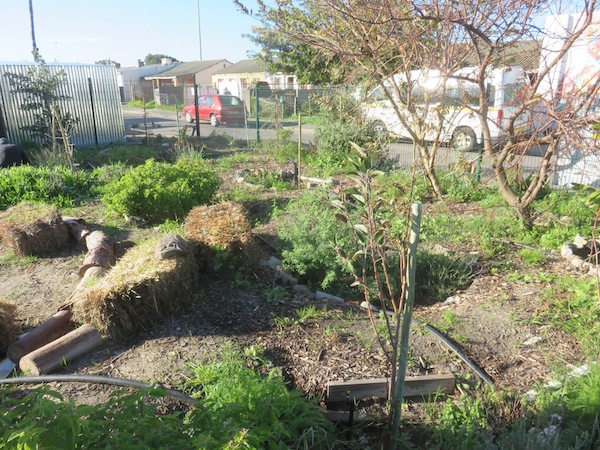 A beautiful garden built by Guerilla House and the Rastafarian community of Langa. It contains many native food plants.
A beautiful garden built by Guerilla House and the Rastafarian community of Langa. It contains many native food plants.How many people go to a green place to find peace, and in that peace, find more love for man in general. Even Jesus went to pray in an olive grove in the time of his greatest stress, and I'm wagering it was the human, suffering side of him pulling him there. The researchers postulate that evolution has made us relax in the presence of green abundance as it signals that there will be less fighting over resources. Maybe nature has designed us to seek green abundance to survive and the good feeling is the dopamine reward for following an urge and reaching its fulfillment. If so its an urge we all know about in our blood and have for millennia.
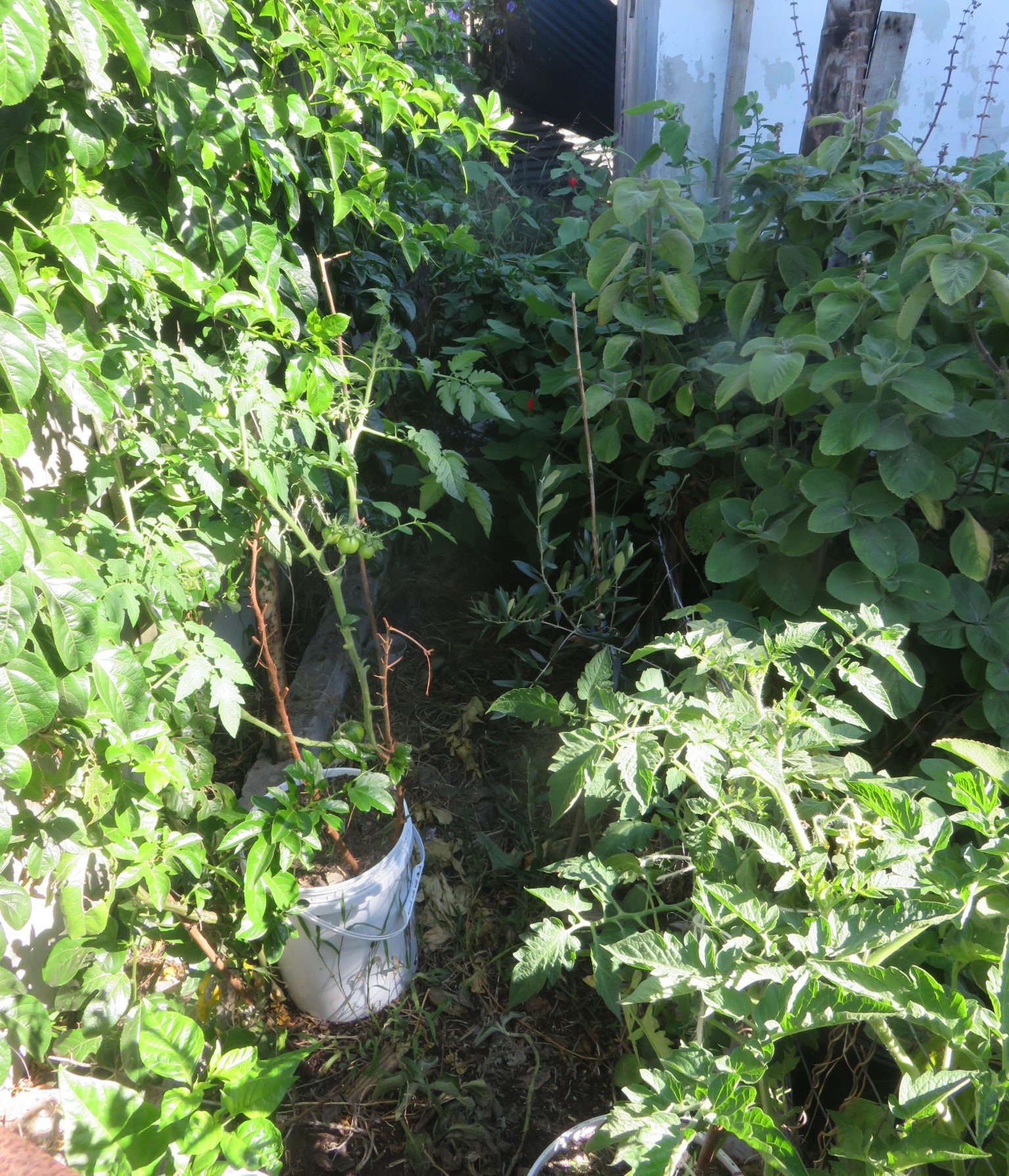 An area of my garden which became plant dominated, and then no longer needed any irrigation !
An area of my garden which became plant dominated, and then no longer needed any irrigation !Deep down somewhere, we are all gardeners at heart. Creating healthy soil and regenerating our green environments is highly likely to produce a groundswell of reduced stress, greater physical health and better nutrition. We know that the gut bacteria produce our brain chemistry. Thus with more green space and healthy soil, we could expect a rising tide of happiness, psychological health and productivity, and thus wealth in a nation. Hence my eco propaganda T-shirt slogan “Regenerate a Nation with Soil Aggregation”, its initial absurdity makes more sense in this light I hope.
Plants, soil and life itself
Plants make life as we know it possible, and bacteria and fungi made plants possible. Long long ago when the earth was uninhabitable by creatures like ourselves, bacteria survived without oxygen, as many of them do to this day. Then the first photosynthesizing organisms evolved, the cyanobacteria, producing oxygen as a byproduct of photosynthesis. They eventually tipped the atmosphere into its present oxygen containing state. Some of them became internalized within other cells to form the ancestors of the chloroplasts in plant cells.
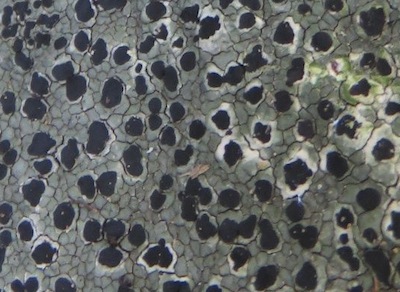 Lichens on a rock in the forest. Another type of plant-fungal symbiosis which may break down rock to release nutrients.
Lichens on a rock in the forest. Another type of plant-fungal symbiosis which may break down rock to release nutrients.Fungi mined minerals with their hyphae before plants had roots and in symbiosis with plants, doubtless using their sugars, allowed plants to colonize the land.
The evolving plants produced oxygen and absorbed carbon dioxide, and maintained the atmosphere which provides support for oxygen breathing animals like us. This creates in me feelings of awe and gratitude. Good and healthy feelings according to Berkeley happiness research, whether your prime mover is God or some other force.
Soil microbes and plants and their synergies make the pyramid of life possible . The plants produce sugars, which are the basis of life above and below the ground. It is from these sugars that other organic molecules can be built, like more complex carbohydrates, proteins and lipids. Plants create the stuff of life itself with their green solar panels.
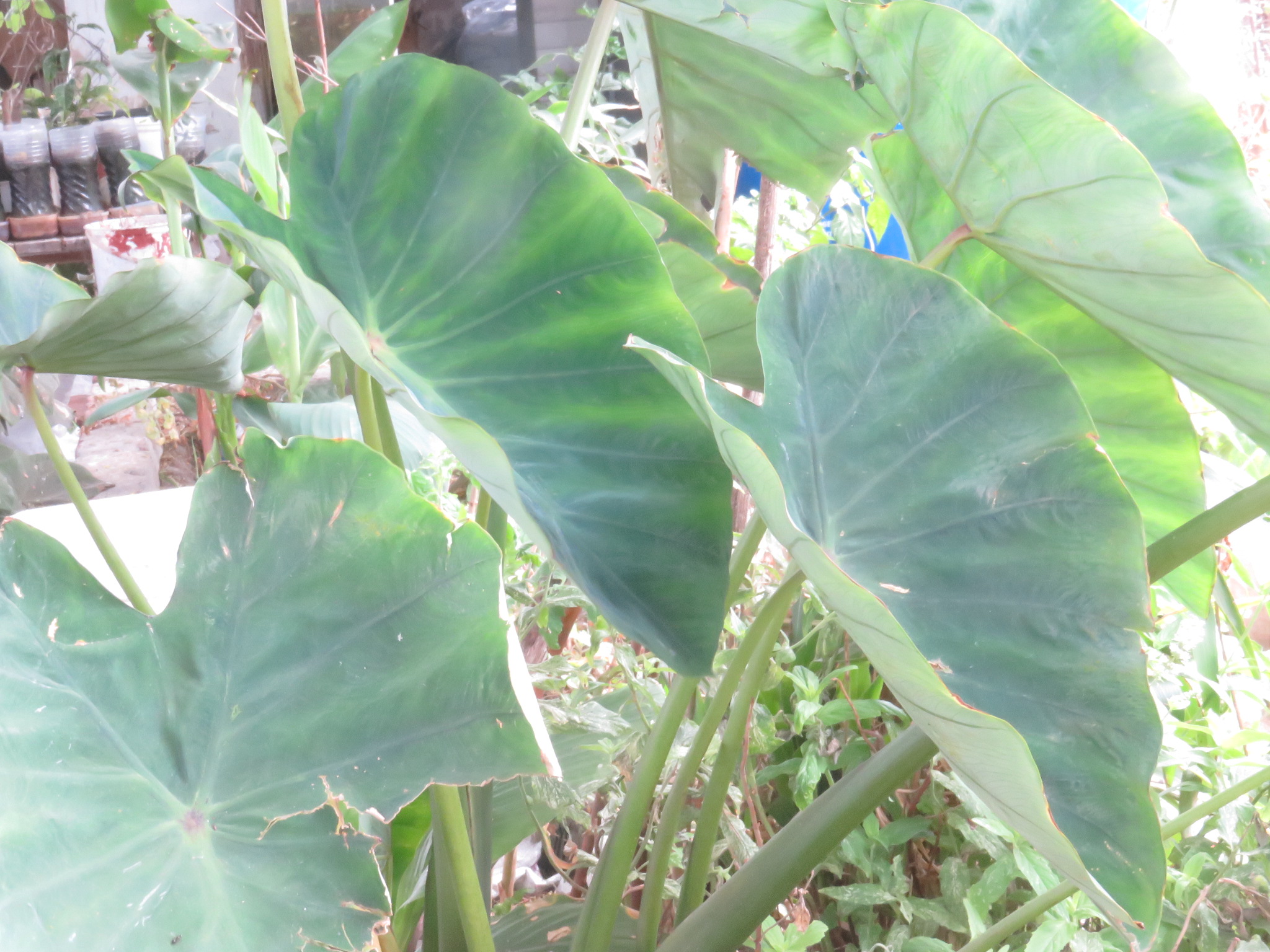 Solar panels that make food. Taro plants in my wetland.
Solar panels that make food. Taro plants in my wetland.There are so many positive feedback loops between the healthy soil microbes and plants because of their very ancient relationship and this article only scratches the surface. Our present knowledge is probably very inadequate.
Regenerative agriculture and conservation
The juxtaposition of
conservation and human needs raises contentious questions. I believe we
cannot survive as a species without some form of nature conservation.
As we are learning from the functioning of life in healthy soil, what was once invisible to us, and we took fore granted, is what actually sustains us. We will die slowly without microbial diversity under out feet. Regenerative farming increases this diversity under our feet. It is conservation at a microscopic level.
We have destabilized the microscopic cosmos around us, and pandemics are the result as mutant strains find a substrate and super vectors in the combination of dense human populations and rapid global travel. Sustaining and stabilizing the microcosm will buffer us against disease and make us more resilient when supply systems break down.
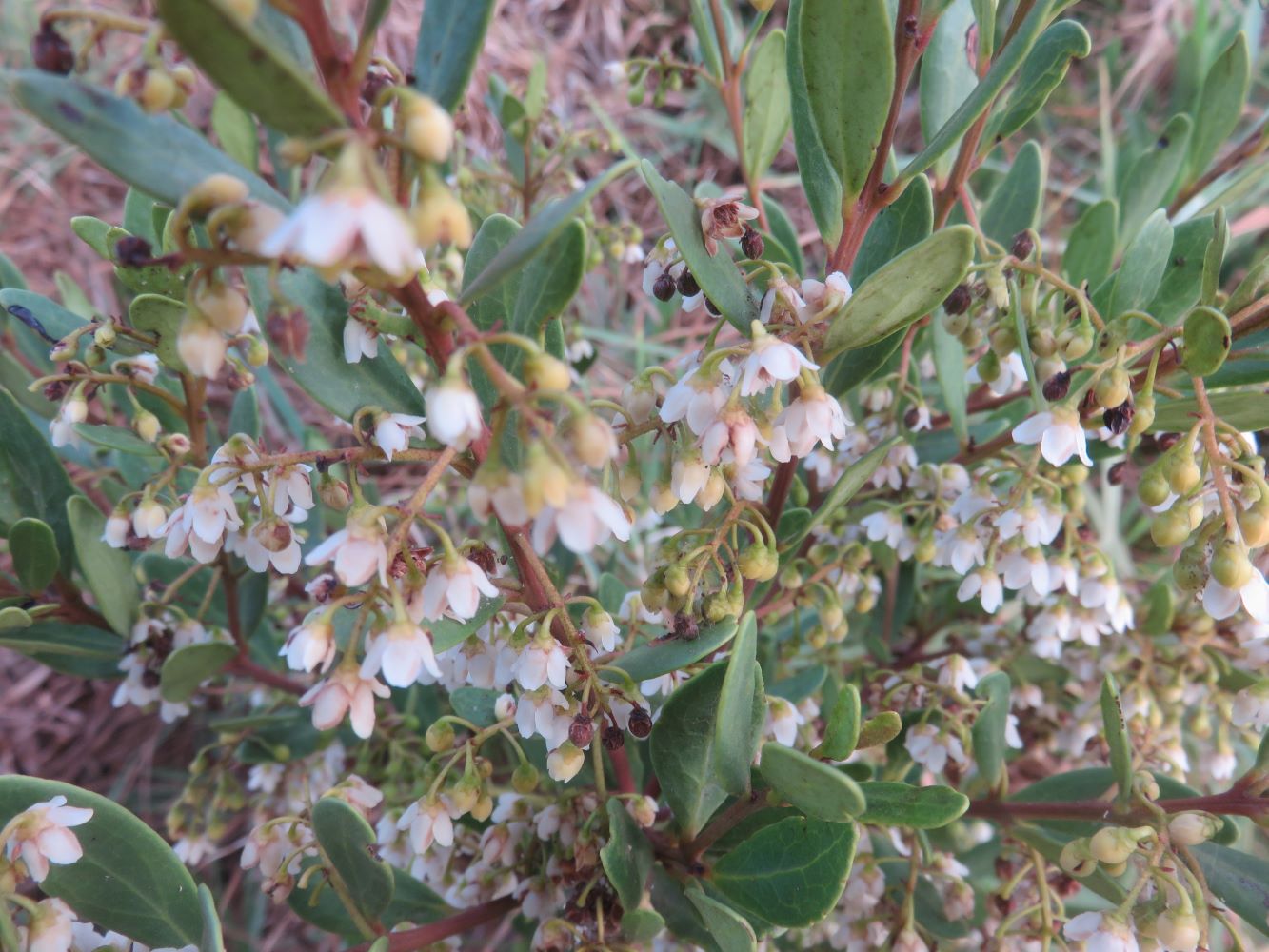 A beautiful compact native tree that produces sweet black berries. One of the wild plants harvested with the intention of propagating plants for the food forest.
A beautiful compact native tree that produces sweet black berries. One of the wild plants harvested with the intention of propagating plants for the food forest.But in addition, regenerative practice claims to increase macroscopic diversity, that of plants and animals, insects, and the whole web of life beyond the soil web. All of this can provide the resilience our green abundance seeking instincts tell us is good.
For me, reducing arable soil loss, even reversing this to arable soil gain, will increase plant food habitat, which decreases the pressure on and the loss of wild habitat. More land optimizing, effective, regenerative farming has got to be good for conservation, whether the farms themselves protect wild plants and animals or not, as they claim to do.
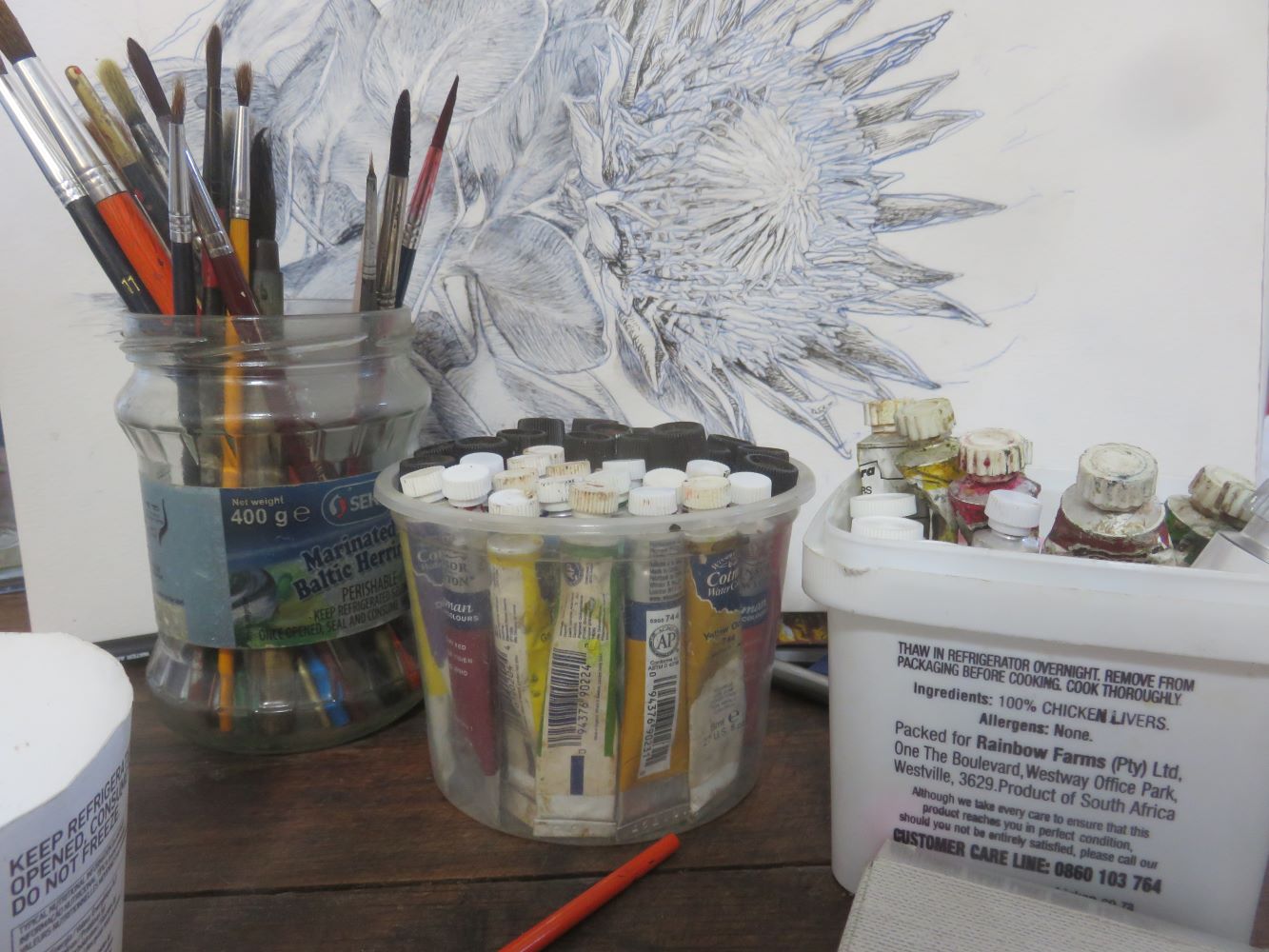 My art must support my writing, and my writing supports the art, tells a story about the plants in the designs. Close the circles in every which way.
My art must support my writing, and my writing supports the art, tells a story about the plants in the designs. Close the circles in every which way.If you wish to support my writing, please support my art and design work. You can see regular updates on "The artist's garden art blog" Or you can read my wild flower design. articles on the background of the flowers in my designs. If you dig, you find that each flower tends to have a fascinating story, not just in relation to humans and culture, but in other biological relationships, such as pollinator plant relationships.
------
home page for links to all the articles, aerobic composting to Zantedeschia aethiopica !
------
Saving soil will also save ourselves: links to the soil and garden fertility articles
Restore Nature Newsletter
I've been writing for four years now and I would love to hear from you
Please let me know if you have any questions, comments or stories to share on gardening, permaculture, regenerative agriculture, food forests, natural gardening, do nothing gardening, observations about pests and diseases, foraging, dealing with and using weeds constructively, composting and going offgrid.
SEARCH
Order the Kindle E-book for the SPECIAL PRICE of only
Prices valid till 30.09.2023
Recent Articles
-
Geography Research Task
Jan 31, 25 11:37 PM
To whom it may concern My name is Tanyaradzwa Madziwa and I am a matric student at Springfield Convent School. As part of our geography syllabus for this -
Eco Long Drop Pit Latrines Uganda
Nov 29, 24 02:45 AM
Good evening from the UK. My name is Murray Kirkham and I am the chairman of the International and foundation committee of my local Lindum Lincoln Rotary -
Landscape Architect
Oct 01, 24 10:42 AM
I so appreciate your informative description! Your experimentation and curiosity with the seeds, germination, and rearing of the maggot are exciting to
"How to start a profitable worm business on a shoestring budget
Order a printed copy from "Amazon" at the SPECIAL PRICE of only
or a digital version from the "Kindle" store at the SPECIAL PRICE of only
Prices valid till 30.09.2023





